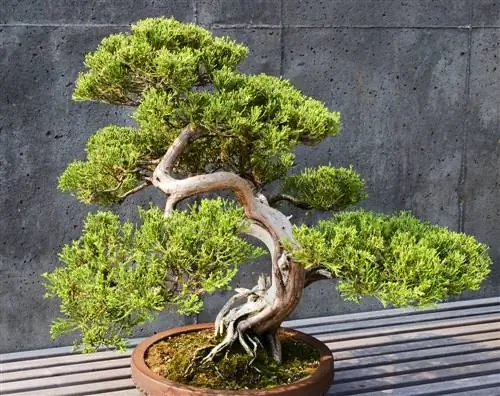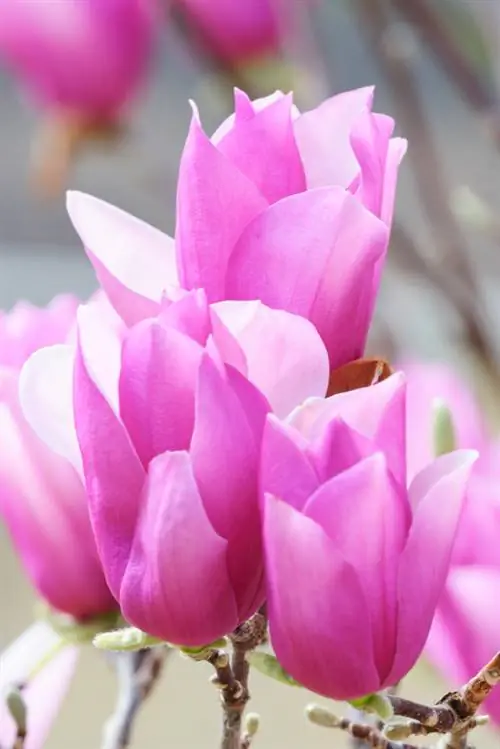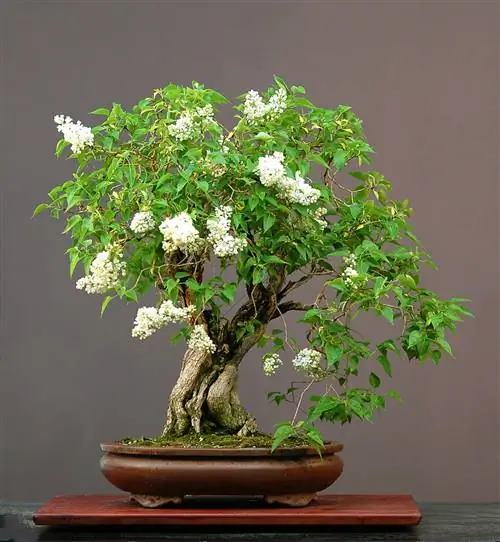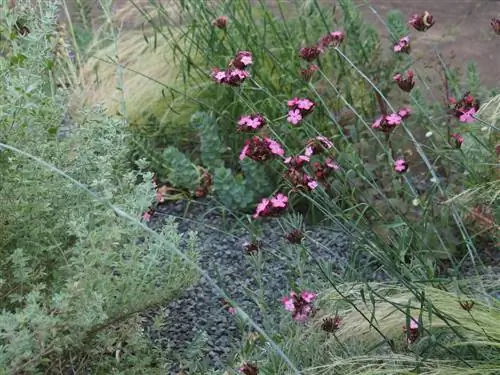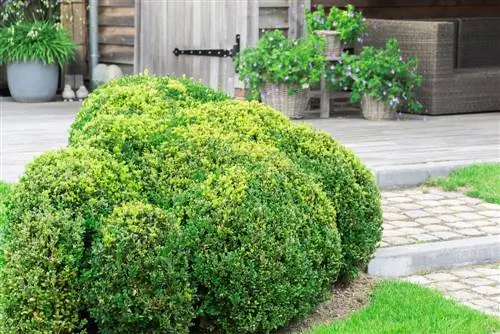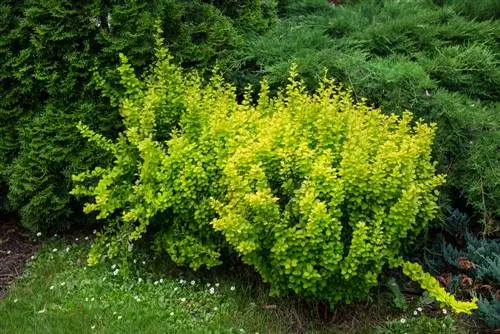- Author admin [email protected].
- Public 2023-12-16 16:46.
- Last modified 2025-01-23 11:21.
The art of bonsai does not stop at the juniper, because the trees are perfect for Asian tree art due to their idiosyncratic growth forms. Some species are particularly popular because of their leaves and branches. Your care is easy.
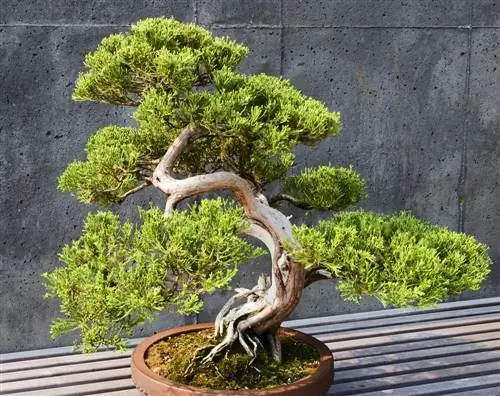
Which types of juniper are suitable for bonsai and how do you care for them?
Juniper bonsai, such as the common juniper (Juniperus communis) or the Chinese juniper (Juniperus chinensis), require a sunny outdoor location, moderate watering, protection from frost and regular fertilization in order to grow he althy and attractive shapes to develop.
Suitable species
Juniper is a genus of the cypress family that includes around 50 to 70 species. The shrubs are divided into two groups. In addition to species with scale-shaped foliage, there are woody plants that develop needle-like leaves.
The common juniper (Juniperus communis) is the best-known species with needle-shaped foliage, which occurs on open heathland and adorns many gardens. This type is ideal for beginners in the art of bonsai because it is easy to design and forgives cutting errors. There are some species whose foliage turns purple to brown when exposed to frost.
Scaly foliage
In addition to the common juniper, there are several related species with evergreen and scale-shaped foliage that are also popular in bonsai cultivation. The Chinese juniper (Juniperus chinensis) is not only sought after because of its Asian origins. The tree offers a wide range of design options and can be grown as a Shohin bonsai or as a large specimen.
The short-stemmed Shimpaku juniper (Juniperus chinensis var. sargentii) is the Japanese variety of Chinese juniper that allows for extravagant designs. Its special feature lies in its unconventional growth habit. Branches and trunk tend to grow horizontally. They can be easily wired and formed into curved lines.
Quality features
For a tree to work as a bonsai, it must have certain properties. In addition to a stable root base, the quality features include harmonious trunk rejuvenation and well-developed branches. The Chinese juniper is perfect as a bonsai because it grows very slowly and therefore requires little care. Like the common juniper, it develops all the characteristics of an ideal bonsai.
The Shimpaku bonsai is an exception to these characteristics because the species develops natural growth forms that do not correspond to the typical bonsai quality. The growth is characterized by chaotically branched branches. This variety develops shapes that other junipers have difficulty achieving. Its beauty lies in the extraordinary figures, which are highlighted more clearly by wiring and cutting measures.
Care
Junipers must be cultivated outdoors all year round. They are not suitable as indoor bonsai because they need a bright and airy place in full sun. Protect the bucket from frost in winter as the substrate freezes quickly.
The trees require moderate water and can be kept a little drier. Drought is tolerated better than waterlogging. Allow the substrate to dry thoroughly between watering sessions. Spray the foliage regularly with water, as high humidity ensures lush growth.
How to fertilize juniper bonsai:
- once a month with organic fertilizer (€37.00 on Amazon) in solid stick form
- every week with liquid fertilizer
- in spring with nitrogen-based fertilizers

